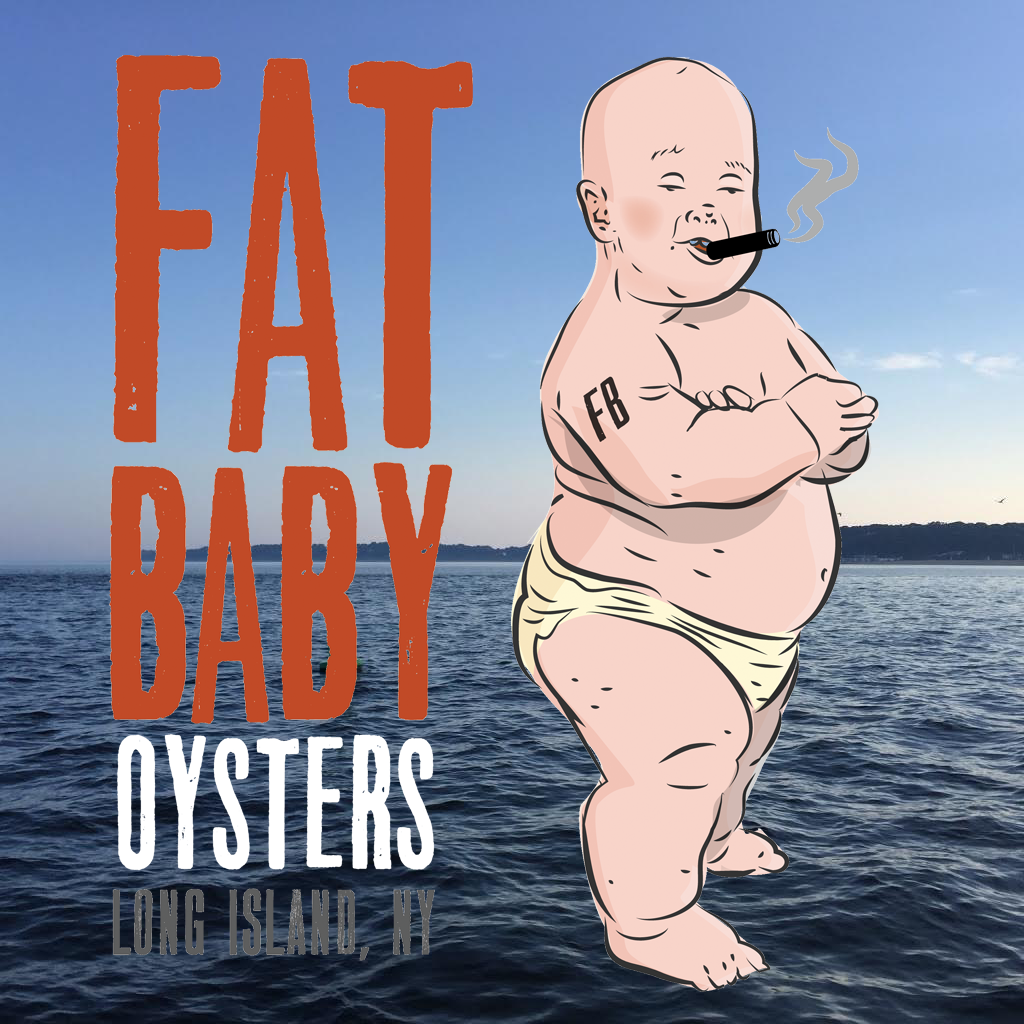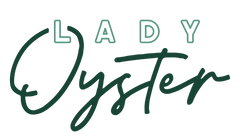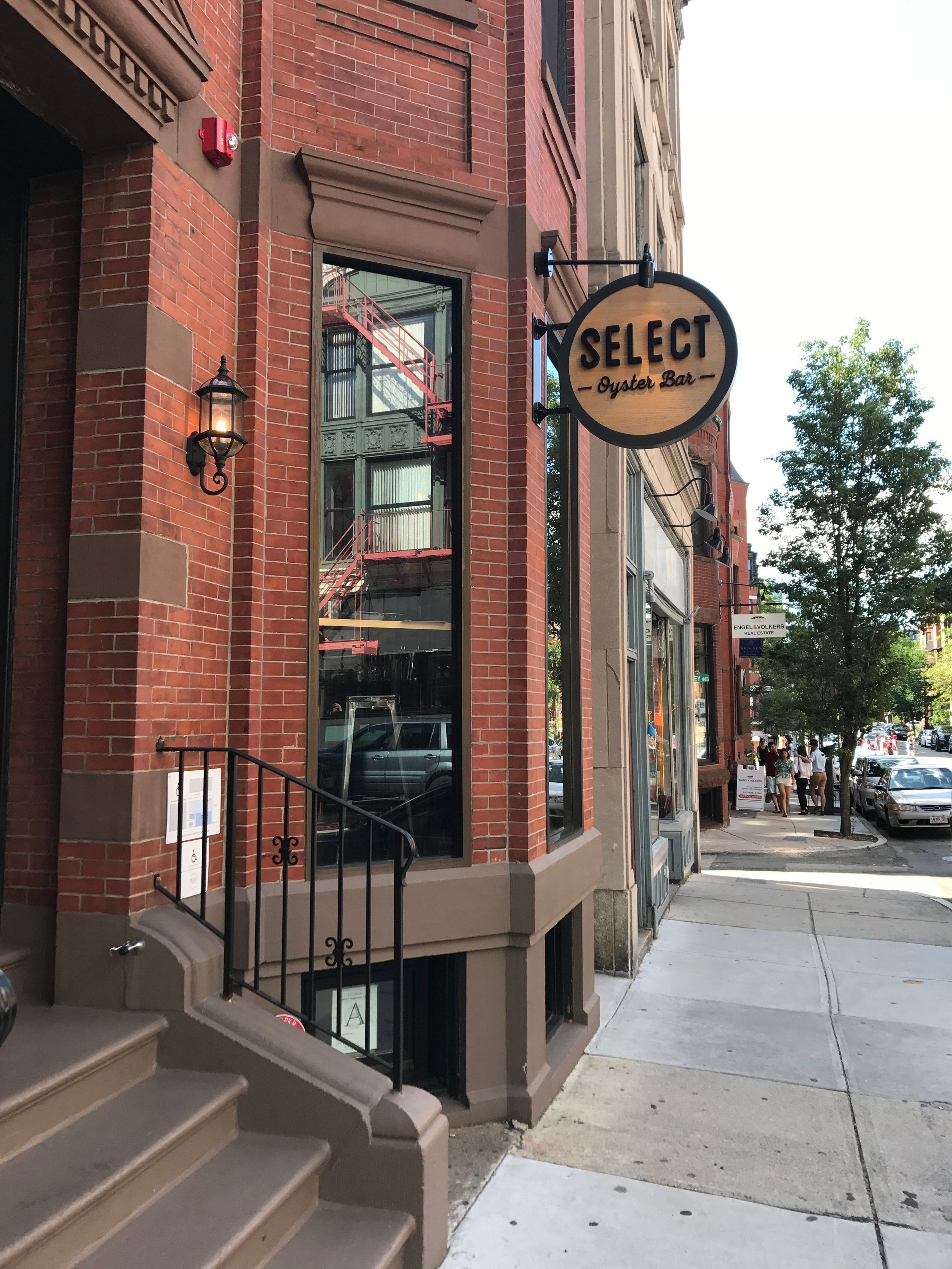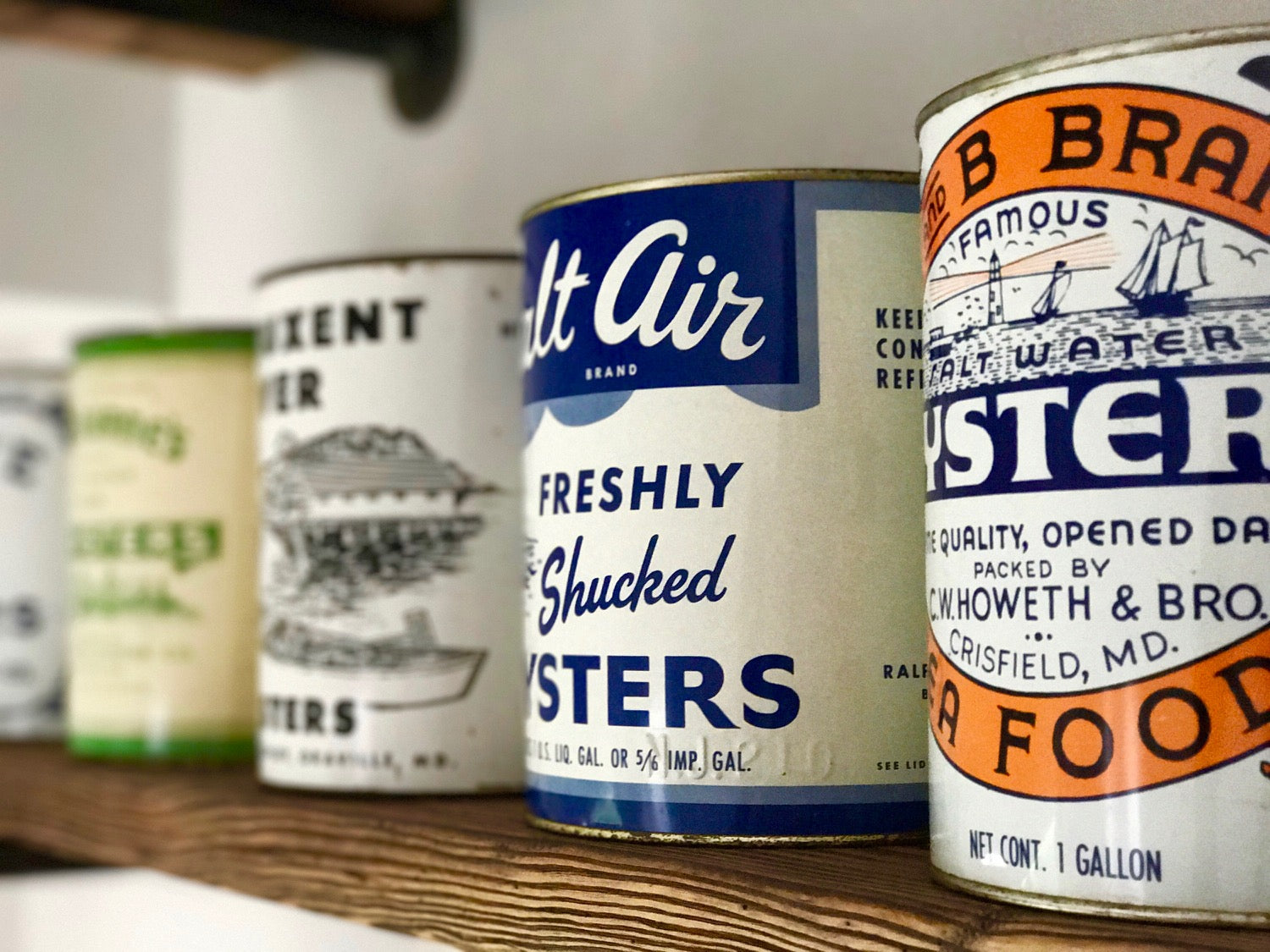The Story of Fat Baby Oysters

How could I not ask Fat Baby Oysters for a story? I’ve followed them online and they really do “scream with attitude.” How did they come up with that name? What sets them apart? I reached out to Stephen to learn more. I love their concept. I hope you’ll enjoy their story as much as I do, and please go scope them out at Stephen’s recommended NY spots.
We’d like to know the origins of Fat Baby Oysters. Where did it all begin? How did you get into harvesting oysters?

Source: http://www.fatbabyoysters.com
Fat Baby Oysters has only formally been in existence for about two years, but we’ve been in the wholesale oyster business since the 1970s! Fat Baby Oysters is a South Bay Seafood brand that was developed by the owner, Bob and his son Stephen.
What is one unique thing about your oysters, or your process, that you would like to share with oyster consumers?
What’s really cool about Fat Baby Oysters and what sets us apart on oyster bar menus is:
(A) FBO are 100-percent wild; most oysters are farmed nowadays. We’re not knocking the farmed oysters, but we are very proud of our native New York oysters. Oysters’ characteristics are shaped so much by their living environment and habitats. New York and Mid- to North-Atlantic oysters in particular have delicious natural salt content; meaty, deep cups; and hardy callous shells.
I bring up the shells because they’re ideal for shipping as opposed to thinner, brittle shells that often chip, causing oysters in transit to lose their moisture and die in transit.
(B) FBO being 100-percent wild-harvested from the Long Island Sound, also implies that Fat Babies are harvested from a very wide area, and that too provides variations in the characteristics of Fat Baby Oysters.
For instance, we have oystermen who launch their boats out of Port Washington and Oyster Bay, which are western harbors of Long Island; we have oystermen who take day trips out of the Kings Park area of Long Island’s northern coast; as well as oystermen who dock on the North Fork of Long Island, which is the eastern-most tip on the North Shore. The Long Island Sound is such a large body of water, that, we source oysters from Connecticut but are also harvesting in the Long Island Sound.
(C) Many Fat Baby Oysters are diver oysters, meaning they are harvested by oystermen clad in scuba gear with crates in hand, but with rising demand and wider purview, Fat Baby Oysters has more recently expanded our scope to surface harvesters as well.

Source: http://www.fatbabyoysters.com
What’s your favorite part of being in the oyster business? What is the most challenging part?
Satisfied customers.
Challenging: It’s a wild caught item, and hard to have a consistent supply 12 months a year.
What should we expect when we eat one of your oysters?
Our oysters taste briney, salty, not “fishy,” and have a satisfying meaty texture and weight.
Oysters for the Cure

Source: Pink Ribbon Oysters Instagram
Fat Baby Oysters are hand graded and all have a similar size. However, lots of the wild oysters that we source are too small to be Fat Baby Oysters…. so we have a sister brand called Pink Ribbon Oysters, which comprises the smaller ones.
25% net revenue of PROs’ is donated to Breast Cancer Research Foundation. More info and our info video can be found at www.pinkribbonoysters.com
Where can one find your oysters locally? Could you give us a couple restaurants, bars, and/or festivals?
Places to pickup some Fat Baby Oysters off the top of my head…
ROKC, Broadway, New York, NY 10031
Fish, 280 Bleecker street
Dean & Deluca, 156 W 56th Street
The Steam Room, Port Jefferson, New York
Vox in North Salem, New York
So tell us… What’s behind the name “Fat Baby Oysters”?
The name Fat Baby Oysters was concocted while washing my hair. I thought it was clever because it was a juxtaposition of words implying big and small, and the baby element came into the mix by reading a book about the environmental history of New York City through the lens of the oyster. It’s called The Big Oyster by Mark Kurlansky.
A blurb from the book was either quoting or paraphrasing a written artifact describing New York harbor at the time of settlement…and Oysters were described as being the size of babies! I recommend the book… really great! Also a great source for habitat information regarding New York.




